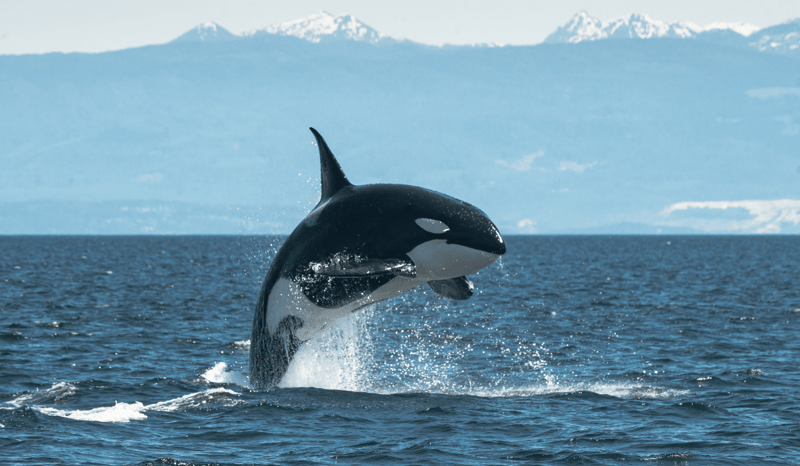
New drone footage reveals orcas using kelp as tools to bond and groom, proving once again that these intelligent, social beings belong in the wild, not in tanks.
Just when we thought orcas couldn’t get any more awe-inspiring, they go and revolutionize what we know about intelligence in the animal kingdom—again.
A stunning new discovery in the Salish Sea has revealed that southern resident orcas are engaging in what scientists are calling “allokelping”—using strands of bull kelp to groom one another and strengthen social bonds. That’s right. These majestic, critically endangered beings aren’t just smart. They’re cultural, emotional, and remarkably resourceful.
For the first time ever, researchers observed orcas detaching kelp from the ocean floor and gently rolling it between their bodies. It’s the first documented case of cetaceans (that’s whales, dolphins, and porpoises) using tools for grooming, something we previously thought was exclusive to species like chimpanzees and humans.
Let that sink in: orcas, with no hands, no thumbs, and a vastly different way of living from us, have found a method to care for themselves and each other using nature’s tools.
This isn’t just an adorable quirk caught on drone footage. It’s a breakthrough in understanding how non-human animals use their environment, form relationships, and pass on behaviors. It’s evidence of orca culture, and it deserves to be protected just as fiercely as their bodies and habitats.
Orcas Are Individuals, Just Like Us
At World Animal Protection, we’ve long fought to ensure that wild animals are recognized as individuals—not attractions, not commodities, not cogs in an ecosystem machine. The discovery of allokelping reinforces what we’ve always known: orcas are someones, not somethings. They grieve, they love, they learn, they teach, and now, we know they groom with tools.
This is far more than just a scientific novelty. Tool use, particularly for non-survival purposes like grooming and bonding, suggests a level of emotional complexity and cultural inheritance that shatters the outdated belief that humans are exceptional. Southern resident orcas have dialects, dietary preferences, unique parenting styles, and now, apparently, spa days.
A Fragile Culture On The Edge
It’s heartbreaking that this groundbreaking discovery is shadowed by the grim reality these animals face. With only 74 individuals left, the southern resident population is critically endangered. Their primary food source—chinook salmon—is vanishing due to damming, pollution, and overfishing. The bull kelp forests they depend on are wilting under the heat of climate change and ocean acidification. And noise pollution from shipping and sonar disrupts their ability to communicate and hunt.
Allokelping might seem like a gentle, soothing behavior, but it may also be a coping mechanism in a world that’s increasingly hostile to their survival.
We must act now to protect not just orcas’ behaviors, their bonds, and their way of life. When we destroy habitats, we aren’t just wiping out food sources. We’re silencing entire cultures. We’re erasing knowledge passed down through generations. We’re ending ways of life we barely understand.
Orcas Belong in the Wild, Not in Tanks
While captive orcas are forced to perform for food and endure lifetimes of stress and confinement, wild orcas are engaging in tool-assisted bonding rituals that rival anything found in primates.
Captivity not only robs them of space. It robs them of culture. There is no “allokelping” in chlorinated pools. No intergenerational knowledge sharing. No dignity.
To help keep orcas in the wild, where they belong, you can urge your federal legislators to support the SWIMS act, which would ban the breeding of certain cetacean species for captivity. Take action today!